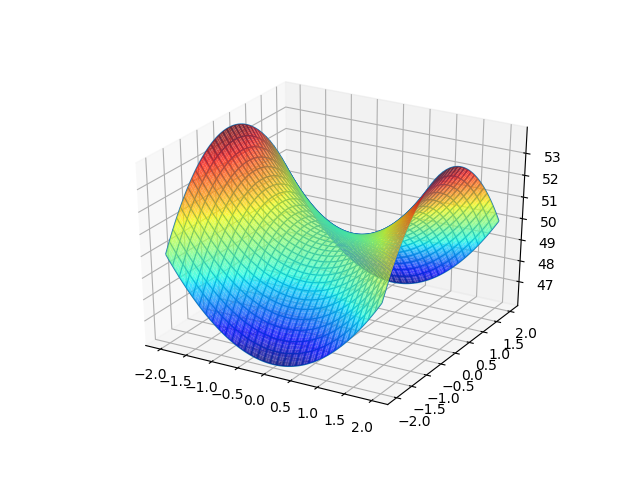Physics Notes Plus1
Chapter 1 (Units and Measurements)
Important Formulas and Notes
Fundamental Quantities are Length(m), Mass(kg), Time (s), Current(A), Temperature(K), Luminous Intensity(cd for candela), Amount of substance(mol)
Supplementary Quantities are Plane angle(radian), solid ange(Steradian)
Scientific Notation
a × 10b where 1< a < 10 and ‘b’ can be +ve or –ve
eg 6.022 × 1023
Order of Magnitude
Order of magnitude of a number or measured value is the power of ten when expressed in scientific notation
Following examples can illustrate it more precisely.
eg 8 must be expressed as 0.8 × 101 ( since 8>5) there fore the Order of Magnitude is 1 (power of 10)
eg 203 must be expressed as 2.03 × 102 (since in 203 the digit 2 is less than 5) there fore the Order of Magnitude is 2(the power of 10)
eg 0.004 must be scientifically expressed as 4 × 10-3 ( Order of Magnitude is -3)
Significant Figures
The number of significant figures gives the accuracy of measurement
The certain digits or reliable digits and first uncertain digit are known as significant digits ie the number of certain digits plus one is
the number of significant digits
Rules for Significant digits
- Digits 1 to 9 is significant (eg number of significant digits in 35 is 2)
- Zero/zeroes between non zero digits is significant (eg number of significant digits in 2105 is 4)
- Trailing zero/zeoroes with decimal are significant but leading zeroes with decimal are not(eg number of significant digits in 0.049 is 2 but in 0.450 is 3)
- Zero at the trailing position is significant for measured values or with units(eg number of significant digits in 640 is 2 but in 640 cm is 3)
When different measurements involve in a calculation, the signifcant figures of the final result should posses minimum number of significant
figures uesd in it
eg if C=A+B
let A=8.192 (number of significant figure is 4), B=7.98 ( number of significant figure is 3)
C=8.192+7.98=16.172
But the value of C must be corrected to significant figure is 16.2 (rounded to 3 significant figures ie least of A and B is that B so it is
the number of significant figure of C
Rules of Rounding off
12.43 rounded to 3 significant figure as 12.4 (3 is dropped since it is less than 5)
18.69 is rounded to 3 significant figure as 18.7 ( 1 is added to 6 since 9 is greater than 5)
14.85 is rounded to 3 significant figure as 14.8 ( digit is retained since 8 is even and last digit= 5)
56.75 is rounded to 3 significant figure as 56.8 ( 1 is added to the uncertain digit since 7 is odd and last digit=5)
Practical units of length
Parsec=3.08 × 1016 m=3.26 light year (It is defined as the distance at which an arc of length one astronomical unit subtends an angle of one second )
Light year=9.46 × 1015m (It is the distance travelled by light in one year)
Astronomical unit=1.496 × 1011 m (It is the average distance between sun and the earth)
Angstrom=10-10m
Practical units of mass
Metric ton=1000kg
Solar mass=2 × 1030 kg
Chandrasekhar limit=1.4 times solar mass=2.8 × 1030 kg
Practical units of time
Solar day=24 hours
Solar year=365 and quarter days
Lunar month=27.3 days
Shake=10-8 s
Measuremnets of large distances
Parallax Method
Combination errors
If x=a+b or a-b
∆x=absolute error in x
∆a=absolute error in a
∆b=absolute error in b
Maximum absolute error in x , ∆x=∆a+∆b
Maximum relative error in x, ∆x/x=(∆a+∆b)/(a-b) (If x=a-b )
Maximum relative error in x, ∆x/x=(∆a+∆b)/(a+b) (If x=a+b )
Maximum relative error in x, ∆x/x=(∆a+∆b)/(a+b) (If x=a+b )
If x=a x b or a/b
Maximum relative error in x, ∆x/x=∆a/a + ∆b/b
Percentage error in x is the sum of the percentage errors of a and b
If x=an× bm
Maximum relative error in x, ∆x/x=n(∆a/a) +m( ∆b/b)
Dimensions of physical quantites
The fundamental quantities have dimensions as M,L,T,A,θ for mass,length,time,intensity of current, absolute temperature respectively
| Quantity | Formula |
DF
|
|---|---|---|
Speed
|
Distance /time
|
M0L1T-1
|
Accelaration
|
Change in velocity/time
|
M0L1T-2
|
Force
|
mass x accelaration
|
M1L1T-2
|
Work
|
Force x distance
|
M1L2T-2
|
Energy
|
Work energy principle (W=E)
|
M1L2T-2
|
Gas Constant
|
PV/T
|
M1L2T-2θ-1
|
Resistance
|
Volt/Current
|
M1L2T-3A-2
|
The important applications of dimensional analysis are
- Convert one physical quantity from one system to another (eg SI to cgs etc)
- Check the correctness of a given relation (Checking Homogeneity of equation)
- Derive the relation between various physical quantities
eg: Check the correctness of the equation using Dimensional analysis
v=u+at
Where v and u have dimensions of velocity ie M0L1T-1
M0L1T-1= M0L1T-1+ M0L1T-2 x T1
M0L1T-1= M0L1T-1+ M0L1T-1
M0L1T-1= M0L1T-1
Dimension of LHS= Dimension of RHS
Hence proved
eg Establish a relation between workdone, force and displacement
w α fa db
ML2T-2=M1aL1aT-2a L1b
By comparing the powers of M,L,T
a=1
a+b=2
so b=1
workdone=f1× d1
work done= force × displacement
eg Derive an expression for planck’s constant
E=hυ
Plancks constant, h= energy/frequency
Dimension of h= DO energy/DO frequency
=DO work/DO frequency
=DO force× displacement/DO frequency
=MLT-2×L/T-1
=ML2T-1
Limitations Of Dimension analysis
- The dimensionless constants can not be related to the equation
- Not possible to derive relations including more than one term (ie we can not derive the relations of the form C=A+B)
- Not possible to establish relation connectig more than 3 unknowns
- Triganometric functions, logarthamic function, exponential functions etc can not be derived
- Many physical quantities have same dimension so it is not possible to distinguish them by simple dimension analysis alone
****End of chapter 1*****



Comments
Post a Comment